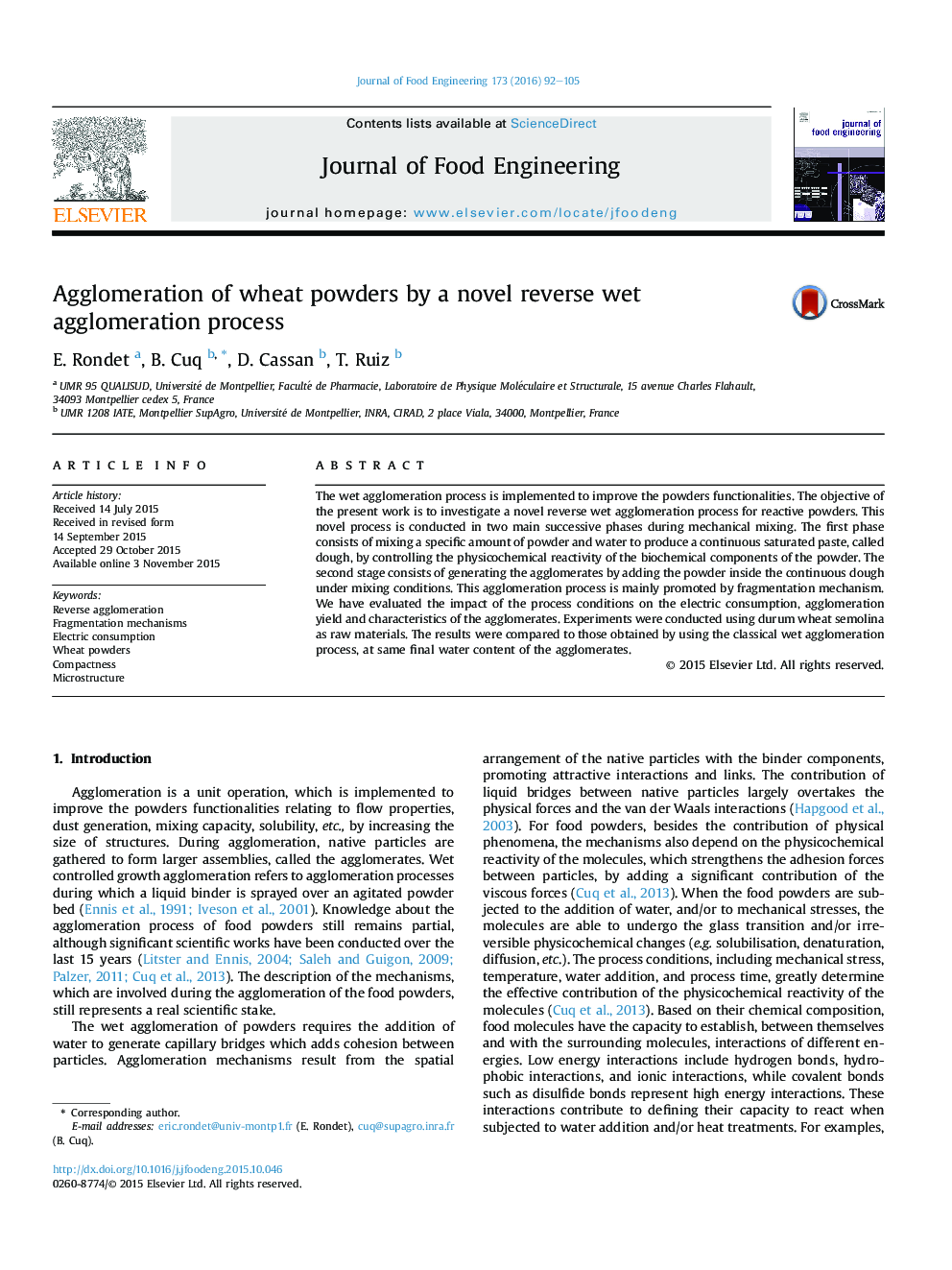| Article ID | Journal | Published Year | Pages | File Type |
|---|---|---|---|---|
| 222766 | Journal of Food Engineering | 2016 | 14 Pages |
•Innovative process to agglomerate wheat powder.•Agglomerates were produced by the novel reverse wet agglomeration process.•The process conditions control the properties of the agglomerates.•The agglomeration process is mainly promoted by fragmentation mechanism.
The wet agglomeration process is implemented to improve the powders functionalities. The objective of the present work is to investigate a novel reverse wet agglomeration process for reactive powders. This novel process is conducted in two main successive phases during mechanical mixing. The first phase consists of mixing a specific amount of powder and water to produce a continuous saturated paste, called dough, by controlling the physicochemical reactivity of the biochemical components of the powder. The second stage consists of generating the agglomerates by adding the powder inside the continuous dough under mixing conditions. This agglomeration process is mainly promoted by fragmentation mechanism. We have evaluated the impact of the process conditions on the electric consumption, agglomeration yield and characteristics of the agglomerates. Experiments were conducted using durum wheat semolina as raw materials. The results were compared to those obtained by using the classical wet agglomeration process, at same final water content of the agglomerates.
